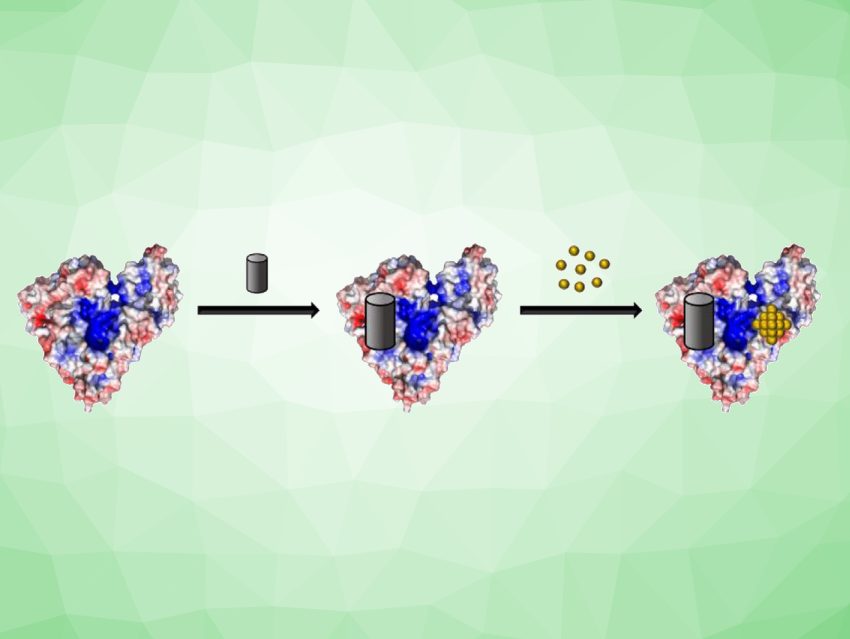Fluorescence photoswitchable materials, which exhibit a reversible fluorescence response under a light stimulus, can be useful for developing advanced optical tools for sensing, anticounterfeiting, and imaging. However, it is still challenging to prepare fluorescence photoswitches with optimal performance and stability. A simple and generalizable method for the construction of more robust fluorescence photoswitches would, thus, be desirable.
Li Shang, Northwestern Polytechnical University, Xi’an, China, and colleagues have developed a new strategy for fabricating fluorescence photoswitches. The team used albumin proteins in dual roles, i.e., as photochrome carriers and biomineralization templates.
As an example, the researchers created a fluorescence photoswitch by incorporating both a photochromic diarylethene dye (CMTE) and red-emitting fluorescent gold nanoclusters (AuNCs) into specific domains of bovine serum albumin (BSA) in a highly controllable manner (pictured schematically). The synthetic strategy involves a pre-modification of the proteins with photochromic dyes via non-covalent host-guest chemistry, followed by the in situ synthesis of fluorescent nanoparticles. CMTE was encapsulated into BSA by simple mixing in an aqueous solution. Gold nanoclusters were then generated by mixing CMTE–BSA with HAuCl4 and subjecting the mixture to alkaline conditions.
Different from previously reported photoswitches, the fluorescence of the prepared system is mainly modulated via an inner filter effect (IFE) mechanism. It exhibits high switching efficiency with an on-off ratio of up to 90 % and a reversible fluorescence response. This work provides a new, generalizable albumin-protein-assisted strategy for fabricating advanced fluorescence photoswitches.
- Site‐specific fabrication of gold nanocluster‐based fluorescence photoswitch enabled by the dual roles of albumin proteins,
Wencheng Zhong, Xiaojian Yan, Shaohua Qu, Li Shang,
Aggregate 2022.
https://doi.org/10.1002/agt2.245



![Synthesis of [c2]Daisy Chains via Mechanochemistry](https://www.chemistryviews.org/wp-content/uploads/2025/04/202504_RotaxanesWithSolidStateMechanochemistry-125x94.png)
